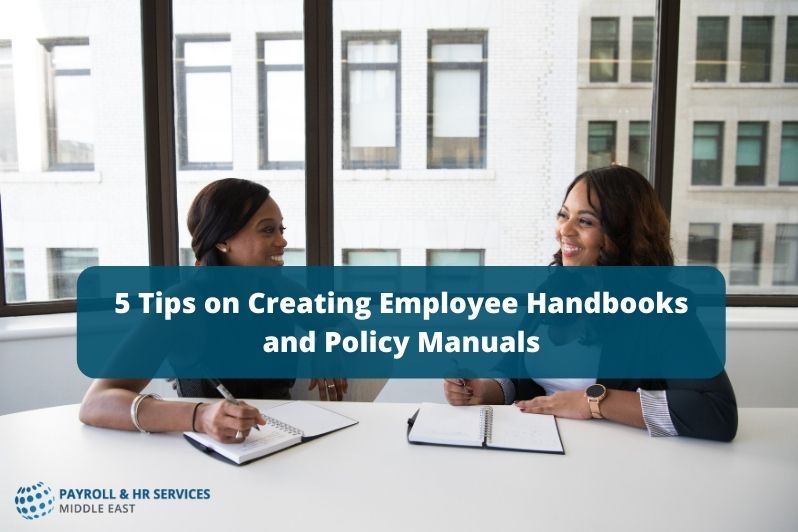Employee handbooks and policy manuals of businesses in UAE are meant to offer a comprehensive look with what it means for new hires to be working with their new employers. Needless to say, the documents include information on a broad range of areas. In this article, well provide you with tips so you can create an effective employee handbook and policy manual for your organization. Read on!
1. Set the tone with the introductory information
Your handbook has to have an introductory section. Take note: this is very crucial as this will set the stage of your business to your staff. Apart from the table of contents which help in navigating the manual or handbook, include the following for your introductory section:
- Company core values – here is where your staff members will know what the organization is about, as well as what they will be striving to accomplish;
- Welcome statement – of course, a simple message is required from the company founder. The message should be motivating and encouraging. As much as possible, include statements that make readers feel that they are valuable members of the organization;
- Statement of purpose – the message that will solidify the “why” for the creation of the employee handbook and policy manual. A statement of purpose will allow your employees to fully understand why they are to read through the manual and understand the entire document.
2. Include at-will protections
As applicable, the employee handbook and policy manual of your business should include details regarding the right of the employer in terminating the contract of a staff member at any time and for any reason. In signing the document, a staff member provides acknowledgment of the legal effort that will be taken upon when policies are violated.
One of your goals in creating an employee handbook and policy manual is to avoid wasting resources on litigation from a former employee.
3. Relay information regarding the hiring process
With the modern procedures for hiring in UAE becoming even more complex, it is absolutely necessary that you include information on the hiring processes. The employee handbook should spell all that is going into hiring employees.
First, include statements regarding the provision of equal opportunities for employees. Explain the factors that make employees eligible for hiring. An employee’s eligibility for increased compensation, promotion, training, as well as several different aspects of being employed by your organization should be stated.
It is very important the process is not only defined clearly but also documented. The hiring process has to be followed by all new employees. From the application to the interviewing of prospects and filing of employment paperwork, a company’s employee handbook and policy manual have to fully cover the hiring procedure. Otherwise, applicants that you have passed over can claim discrimination with your organization’s hiring process.
4. Lay the specifics re expectations of new hires
The experience of belonging to a brand new organization is often a whirlwind for a new hire. That being said, the company’s employee handbook has to layout specifics on what a new hire should expect when he or she comes aboard.
First off, document the company policies that are in relation to the probationary or introductory period set in place for a new employee. This can refer to hold on vacation time, insurance, and other aspects for being employed that a new hire is not eligible yet for. Include as well as details on the benefits that will be unlocked once the probationary period is over. In the UAE, a new hire can be in this period for not more than six months.
5. Provide employment parameters
You would want to give your new hires a more focused guide regarding their employment parameters. The information usually includes hours of operation (hours of operation of a business including full time and part-time requirements); overtime regulations (define what is considered as an employee’s overtime work and how the OT work performed will be compensated); policies on time off (there should be a list of the policies employees can adhere to for time away from the company to perform their duties e.g. PTO, vacation, and sick leave); and compensation.
For the latter, your employee handbook has to cover information such as paydays (either monthly, weekly, etc.); deductions (money taken from the paycheck of an employee for retirement, health insurance, etc.); garnishments (if applicable); expense reimbursements (employee handbook should also provide a process for an employee to go through for reimbursing expenses taken from personal cash).
It is advised to seek the advice and guidance of professionals when making employee handbooks and policy manuals. At Payroll Middle East, our seasoned HR specialists in UAE can help ensure you have a valuable resource that is effective at communicating with your employees. Call us now for more information.
